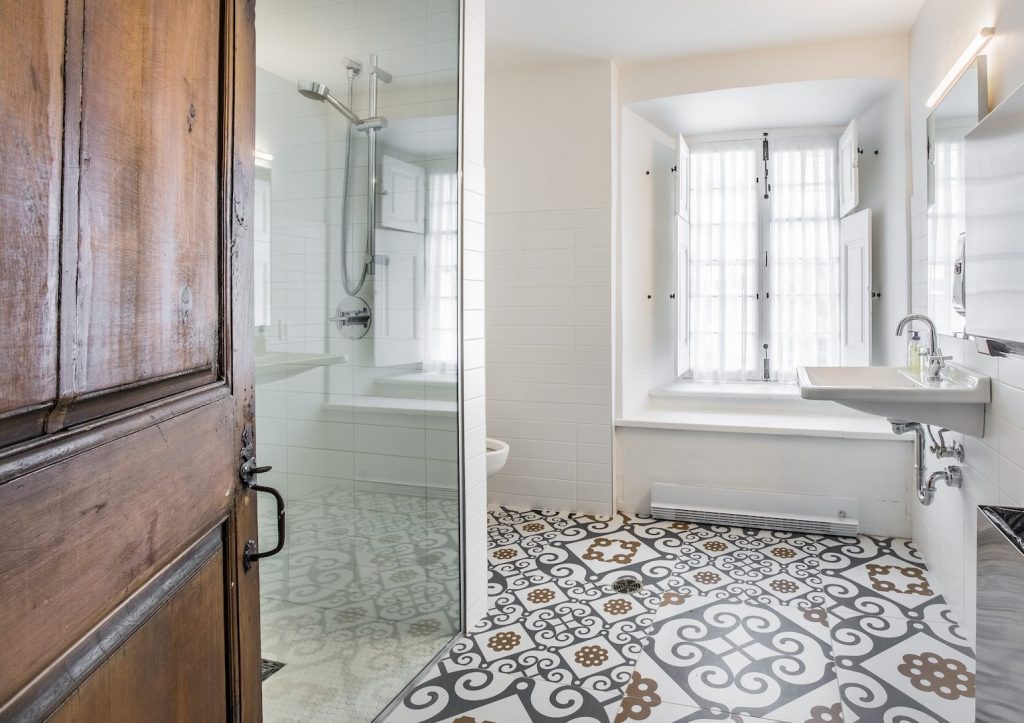Skift Take
Le Monastère des Augustines may seem somewhat spartan, but it provides the quintessential transformation experience that today's luxury traveler seeks.
Here’s your day: Morning meditation. Breakfast in silence. Lunchtime yoga. Happy hour entertainment? Listening to an octet of 80+-year-old nuns singing at Vespers in the on-property chapel. Then, come bedtime, watch your head. The door frame of your room is only 66 inches high. Oh, and the bathroom is down the hall.
It may not sound luxurious (and indeed, the price tag is quite moderate), but the unique experience offered at Le Monastère des Augustines is priceless.
One doesn’t have to don a habit to stay at Le Monastère des Augustines in Quebec City, but a stay at the historic home base of the Augustinian order of nuns may make you change a few of your worst ones. Indeed, this wellness hostelry is the apotheosis of transformation travel. In fact, The Future of Luxury, just released by Sabre Corporation, cites it as a prime example of the “Quintessential Self” trend, in which people travel to find purpose, cultivate empathy and “discover new aspects of their own personalities in the process.” In describing Le Monastère, the report says it “elevates consumers’ self-actualization experience with a socially-responsible retreat in a wow setting.”
On August 1, 1639, the first order of Augustinian Sisters arrived in Quebec City, sent by Louis XIII to care for the bodies and souls of the residents of New France. Coincidentally Le Monastère des Augustines opened in its current incarnation on August 1, 2015.
Le Monastère sits on the site of the continent’s first hospital north of Mexico, so the metamorphosis into a modern-day wellness retreat is a logical extension of the Augustinian mission of healing. But the transformation didn’t happen overnight. In fact, it was a 20-year process.
In the late 1990s, according to General Director Isabelle Duchesneau, the nuns, confronted with declining numbers and an aging sisterhood, started pondering the order’s legacy. Years of feasibility studies and brainstorming sessions ensued. Ultimately, it was decided that the monastery would be given to the public, in the form of a trust ensuring the values of the Augustinian order. Financial contributions by the Canadian federal government (C$15 million), the provincial government (C$15 million) and the City of Québec (C$6 million) kick-started the rehabilitation process. The sisters also made a substantial financial contribution, along with the donation of the building, more than 40,000 artifacts (many contained in an on-site museum), and one of the best-preserved archives in North America.
Next, a business plan had to be developed for the secular non-profit operation. Hospitality industry veteran Duchesneau was brought in to steer the process.According to Duchesneau, “We knew we couldn’t solely be dependent on government funds and donations forever. So, we had to develop a business model with revenue-generating components. We knew there would be a museum and archive center, but we wanted to push it further, while maintaining the values and the heritage of the sisters.”
Duchesneau says the sisters liked the idea of a place of renewal. Thus, the genesis of a wellness hotel, filled with revenue-generating components like rooms, special workshops, massage treatments and an organic restaurant (where the silent breakfast is served, according to monastic tradition). According to Duchesneau “These revenue-generating components are key for conservation and for financially supporting the social mission.” Part of that mission includes offering suites, solace and resources for caregivers and for people working in social service communities.
While the lobby area is a modern, airy space designed with glass and steel, the guest quarters hearken back to the past. Guests can stay in an authentic room (those are the ones with 66-inch door frames). Located in corridors lined with centuries-old religious paintings, these former nun “cells” feature a single bed, hand-made quilts and antique wooden desks. There’s an in-room sink, but other bath facilities are shared. The contemporary rooms have a less monastic feel, along with larger beds, private bathrooms and higher door frames. And yes, there is Wi-Fi.
The daily program combines modern-day healing practices with age-old traditions that span religions and cultures, including yoga, massage and mindfulness. There are three scheduled activities every day, including breathing exercises, yoga, stretching, and meditation.
According to Duchesneau, “The sisters are so happy with the result. They didn’t think it was going to be as far along as this.” As for Duchesneau, she thinks the concept particularly resonates now because “our society is a little lost and our healthcare system does not respond to the needs of the population. The healthcare system is tired, people are tired, everybody’s tired. People are losing their meaning in life and they want to learn how to do things differently.” Le Monastere des Augustines is manna from heaven for pilgrims seeking to bring balance back to their lives.
Have a confidential tip for Skift? Get in touch
Tags: luxury
Photo credit: A bathroom at the nunnery turned wellness escape in Quebec. Les Monestere des Augustines
